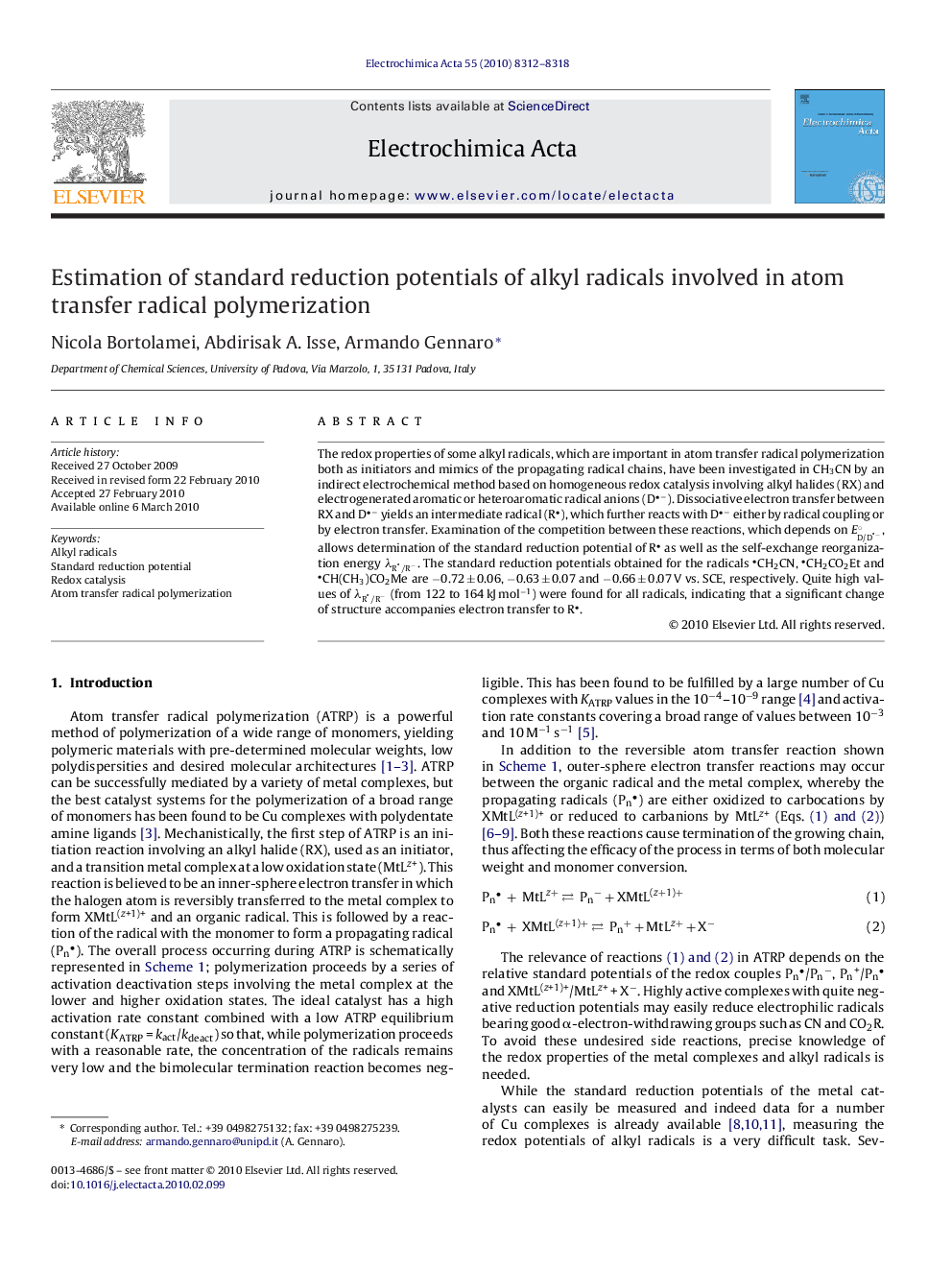| Article ID | Journal | Published Year | Pages | File Type |
|---|---|---|---|---|
| 190455 | Electrochimica Acta | 2010 | 7 Pages |
The redox properties of some alkyl radicals, which are important in atom transfer radical polymerization both as initiators and mimics of the propagating radical chains, have been investigated in CH3CN by an indirect electrochemical method based on homogeneous redox catalysis involving alkyl halides (RX) and electrogenerated aromatic or heteroaromatic radical anions (D−). Dissociative electron transfer between RX and D− yields an intermediate radical (R), which further reacts with D− either by radical coupling or by electron transfer. Examination of the competition between these reactions, which depends on ED/D−°ED/D−°, allows determination of the standard reduction potential of R as well as the self-exchange reorganization energy λR/R−λR/R−. The standard reduction potentials obtained for the radicals CH2CN, CH2CO2Et and CH(CH3)CO2Me are −0.72 ± 0.06, −0.63 ± 0.07 and −0.66 ± 0.07 V vs. SCE, respectively. Quite high values of λR/R−λR/R− (from 122 to 164 kJ mol−1) were found for all radicals, indicating that a significant change of structure accompanies electron transfer to R.
